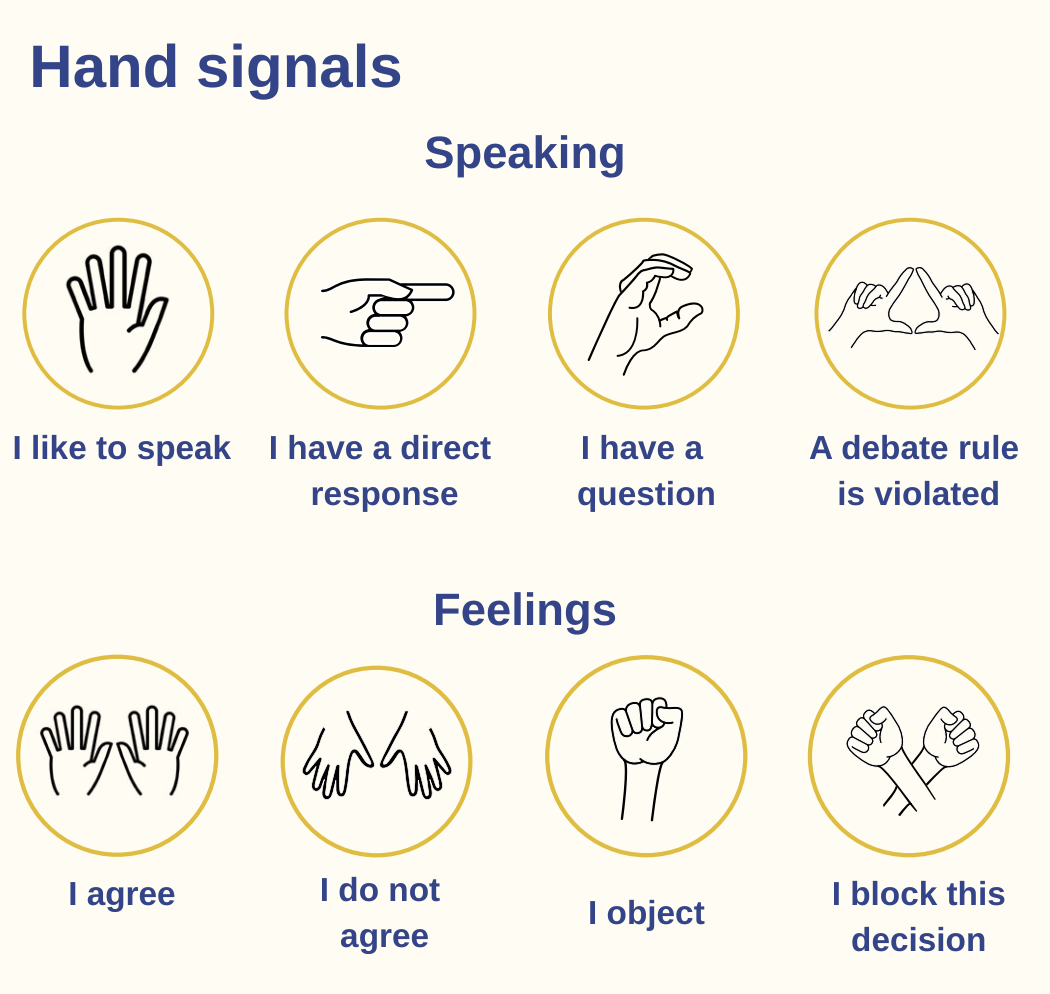Quick decision making
Making decisions with your whole group in emergency situations as well
This guide is also available in PDF format (in Dutch).
In some situations, for example during a civil disobedience action, you lack time and space to have a broad discussion about every decision. You then need a different model to help you make quick decisions.
Discuss beforehand what method you use and who the facilitator will be to guide that. This will make sure you are able to make decisions with your whole group, even in emergency situations.
Step 1 Who facilitates?You need someone to guide the group through the decision making process. The facilitator will start with a round to make sure everyone is mentally and physically alright.Step 2 What is the situation or the problem?Give a short description so that everyone has the information they need.Step 3 Are there suggestions?You could use the hand signals to respond.Step 4 Concerns?If you have concerns: share them! Are there other suggestions?Step 5 Consensus: does everyone agree?If nobody objects but there is still some people abstaining it's better to make a new suggestion.Step 6 Facilitator repeats decisionReady? Divide roles and go! |  |

Finally
Interested in attending a training? Contact us here.
This guide is part of the ‘Toolbox for Movements’. This toolbox contains more short digital guides, offering fundamental knowledge about strategy, movement building, campaigning, and organizing.
We also love to learn. So, if you have any ideas for improving or adding to this guide based on your experiences, let us know!
